Last Updated on October 21, 2025 by mcelik
The Rule of Nines is a key tool in medicine. It helps doctors figure out how much of a child’s body is burned. This is important for giving the right treatment and fluids. At LivHospital, we make sure our young patients get the best care using the Rule of Nines in pediatric burn care.

The Rule of 9 for kids considers how different kids’ bodies are from adults. The National Center for Biotechnology Information says it’s very important to get burn injuries right. This rule helps doctors quickly see how bad a burn is and plan the right treatment.
Pediatric burn care depends a lot on accurate tools, with the Rule of Nines being key. Unlike adults, kids’ bodies are different, so we need special ways to measure burns.
The Rule of Nines helps us guess how much of the body is burned. It breaks the body into parts, each being 9% of the total area. This method is vital for figuring out burn severity and starting treatment.
The Rule of Nines was made for adults but works for kids, too. It’s adjusted for the size differences between children and adults.
The Rule of Nines was first talked about by Pulaski and Tennison in 1949. It was later shared at a 1951 symposium. A.B. Wallace wrote about it in the Lancet, making it even more important in burn care.
The history of burn tools shows how our understanding has grown. Important points include:
Knowing the history of burn tools helps us care for kids better. It shows why the Rule of Nine is so important for them.
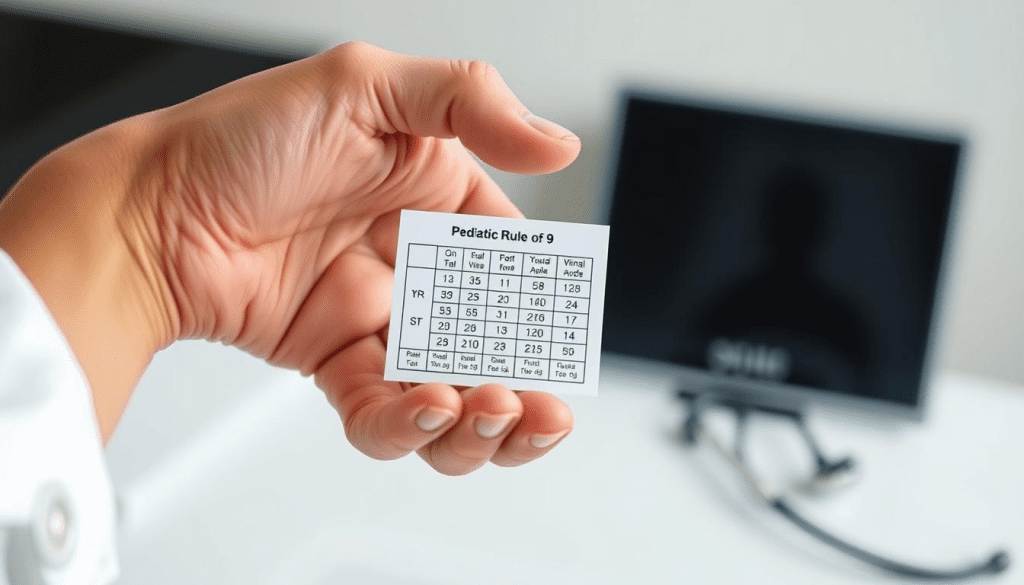
The pediatric Rule of 9 is key for checking burn injuries in kids. It’s different from the adult version because of how kids and adults are built.
Kids’ bodies are not like adults’. Babies and young kids have bigger heads and smaller legs. For example, a baby’s head is a bigger part of their body than an adult’s.
Key anatomical differences include:
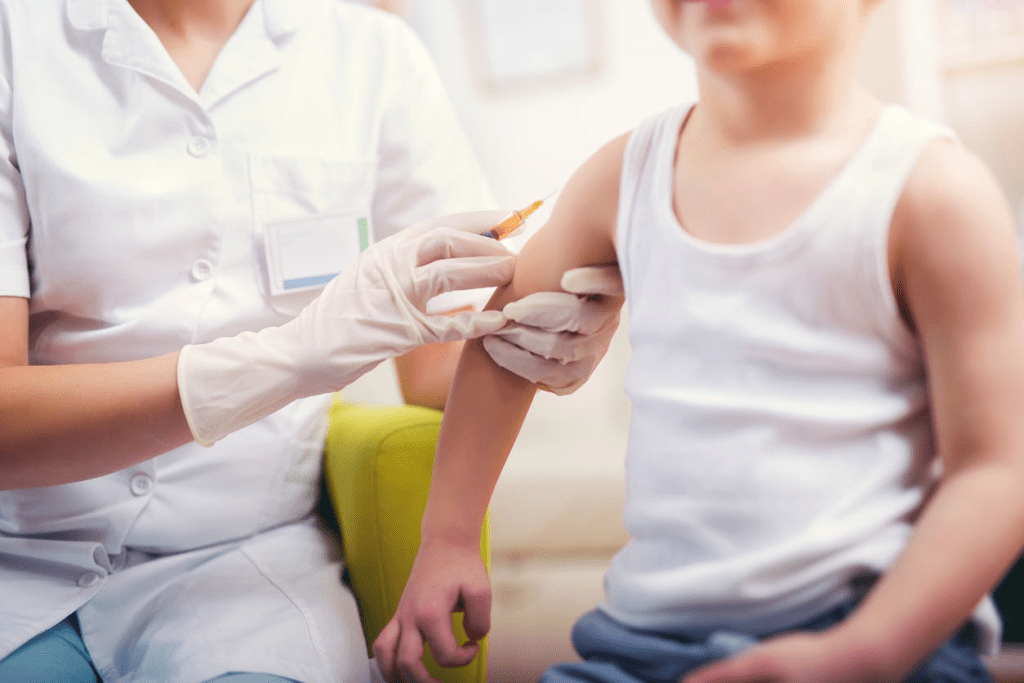
As kids get older, their body shapes change. Babies have big heads, while toddlers and older kids start to look more like adults. But it takes until adulthood for body shapes to fully grow up.
Age-related variations impact burn assessment:
Using adult burn rules for kids can be very wrong. This mistake can lead to the wrong treatment, like too much fluid or bad wound care.
The pediatric Rule of 9 is essential because it:
In pediatric burn care, it’s key to accurately assess injuries. The Rule of 9 helps with this. It’s adapted for kids, taking into account their body sizes, which are different from adults.
In kids, the head and neck cover more of the body than in adults. They make up 18% of TBSA. This is important because kids have bigger heads compared to their bodies.
Each arm, including the hand, is 9% of TBSA in kids. This is the same as adults. It shows that arm size to body size is similar in both age groups.
The front and back of the body each make up 18% of TBSA. Together, they cover 36% of the body. This is a big part of a child’s body.
Each leg, including the foot, is 14% of TBSA in kids. This is adjusted for their body sizes, which are different from adults.
Using the Rule of 9 for kids helps doctors quickly figure out burn injury sizes. This is important for deciding how much fluid to give and for treatment plans. At LivHospital, we focus on accurate burn assessments to help our young patients get the best care.
“Accurate assessment of burn injuries in children is critical for effective treatment and positive outcomes.”
Assessing burns in kids is key to good care. The Rule of 9 helps quickly figure out how big a burn is. This is vital for making the right treatment choices.
The Rule of 9 tells us how much of the body is burned. This info helps us know how much fluid a patient needs. Kids with big burns lose a lot of fluid because their skin is damaged.
The Rule of 9 helps us figure out how much fluid a burn patient needs. This is super important for kids because their bodies are different from adults.
With the Rule of 9, we can tell how big a burn is. Then, we can make sure a kid gets enough fluid to stay hydrated and heal. For example, a kid with a 20% burn needs a lot of fluid to avoid dehydration.
The Rule of 9 helps us make more treatment plans for burns. It tells us how big a burn is, which helps us plan for wound care, pain relief, and preventing infections.
It also helps us know when a kid needs to go to a burn center. This way, kids get the best care for their burns.
Even though the Rule of 9 is helpful, mistakes can happen. If we guess wrong about how big a burn is, we might not give enough fluid. This can lead to bad outcomes.
To avoid these problems, doctors and nurses need to know the Rule of 9’s limits. This way, we can make sure we’re treating kids’ burns right.
The Rule of Nines is a simple tool for managing burns in adults. It’s also key in pediatric burn care. Knowing the rule helps doctors assess and treat burns accurately.
At LivHospital, we focus on top-notch medical care for kids. We use the Rule of Nines to help children with burns. Our goal is to give them the best care and support their families.
Using the burn percentage chart and rule of nines helps doctors make better treatment plans. This leads to better care for kids with burns.
The Rule of9 for kids is a tool to guess how much of their body is burned. It looks at how kids’ bodies are different from adults. This helps doctors figure out how much fluid a child needs and what care they should get.
Kids and adults are different in size and shape. Kids have bigger heads and smaller legs. So, the Rule of9 for kids is adjusted to fit their bodies better.
For kids, the head and neck are 18% of the body. Each arm is 9%. The front and back of the trunk are 18% each. And each leg is 14%. These numbers help doctors understand how big a burn is.
Getting the burn size right is key for treating kids. It helps doctors know how much fluid a child needs. If they get it wrong, it can affect how well the child recovers.
Doctors use the Rule of9 to quickly figure out how big a burn is. It helps them plan the best treatment. Knowing how to use the Rule of9 is very important for kids’ burn care.
Mistakes with the Rule of 9 can lead to wrong treatment. This can be too little or too much treatment. Doctors need to be careful to avoid these mistakes for the best care.
The Rule of Nines chart helps doctors guess how big a burn is. It’s a quick way to see how severe a burn is. This helps doctors plan the right treatment.
A burn percentage chart is a tool to estimate how much of the body is burned. It works with the Rule of 9 to help doctors understand the burn. This helps them plan the best treatment.
The Rule of Nines is a key tool in medicine. It helps doctors figure out how much of a child’s body is burned. This is important for giving the right treatment and fluids. At LivHospital, we make sure our young patients get the best care using this rule in pediatric burn care.
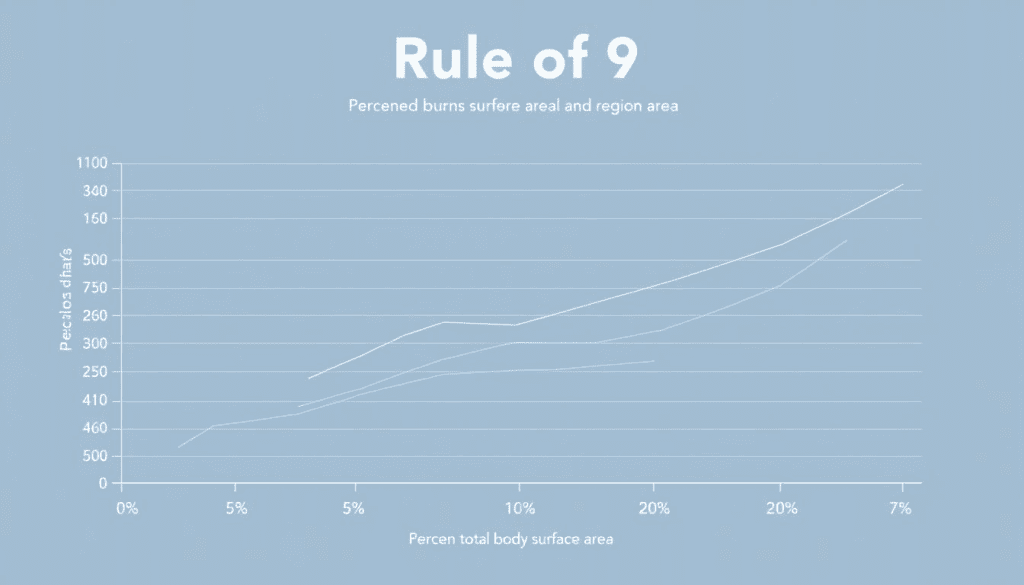
The Rule of 9 for kids considers how different kids’ bodies are from adults. The National Center for Biotechnology Information says it’s very important to get burn injuries right. This rule helps doctors quickly see how bad a burn is and plan the right treatment.
Pediatric burn care depends a lot on accurate tools, with the Rule of Nines being key. Unlike adults, kids’ bodies are different, so we need special ways to measure burns.
The Rule of Nines helps us guess how much of the body is burned. It breaks the body into parts, each being 9% of the total area. This method is vital for figuring out burn severity and starting treatment.
The Rule of Nines was made for adults but works for kids, too. It’s adjusted for the size differences between children and adults.
The Rule of Nines was first talked about by Pulaski and Tennison in 1949. It was later shared at a 1951 symposium. A.B. Wallace wrote about it in the Lancet, making it even more important in burn care.
The history of burn tools shows how our understanding has grown. Important points include:
Knowing the history of burn tools helps us care for kids better. It shows why the Rule of Nine is so important for them.
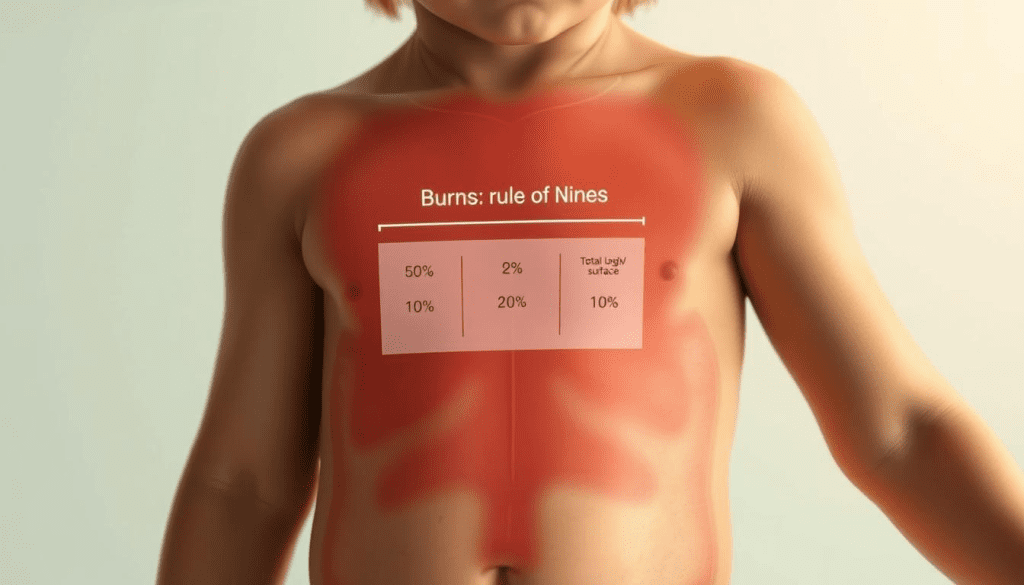
The pediatric Rule of 9 is key for checking burn injuries in kids. It’s different from the adult version because of how kids and adults are built.
Kids’ bodies are not like adults’. Babies and young kids have bigger heads and smaller legs. For example, a baby’s head is a bigger part of their body than an adult’s.
Key anatomical differences include:

As kids get older, their body shapes change. Babies have big heads, while toddlers and older kids start to look more like adults. But it takes until adulthood for body shapes to fully grow up.
Age-related variations impact burn assessment:
Using adult burn rules for kids can be very wrong. This mistake can lead to the wrong treatment, like too much fluid or bad wound care.
The pediatric Rule of 9 is essential because it:
In pediatric burn care, it’s key to accurately assess injuries. The Rule of 9 helps with this. It’s adapted for kids, taking into account their body sizes, which are different from adults.

In kids, the head and neck cover more of the body than in adults. They make up 18% of TBSA. This is important because kids have bigger heads compared to their bodies.
Each arm, including the hand, is 9% of TBSA in kids. This is the same as adults. It shows that arm size to body size is similar in both age groups.
The front and back of the body each make up 18% of TBSA. Together, they cover 36% of the body. This is a big part of a child’s body.
Each leg, including the foot, is 14% of TBSA in kids. This is adjusted for their body sizes, which are different from adults.
Using the Rule of 9 for kids helps doctors quickly figure out burn injury sizes. This is important for deciding how much fluid to give and for treatment plans. At LivHospital, we focus on accurate burn assessments to help our young patients get the best care.
“Accurate assessment of burn injuries in children is critical for effective treatment and positive outcomes.”
Assessing burns in kids is key to good care. The Rule of 9 helps quickly figure out how big a burn is. This is vital for making the right treatment choices.
The Rule of 9 tells us how much of the body is burned. This info helps us know how much fluid a patient needs. Kids with big burns lose a lot of fluid because their skin is damaged.
The Rule of 9 helps us figure out how much fluid a burn patient needs. This is super important for kids because their bodies are different from adults.
With the Rule of 9, we can tell how big a burn is. Then, we can make sure a kid gets enough fluid to stay hydrated and heal. For example, a kid with a 20% burn needs a lot of fluid to avoid dehydration.
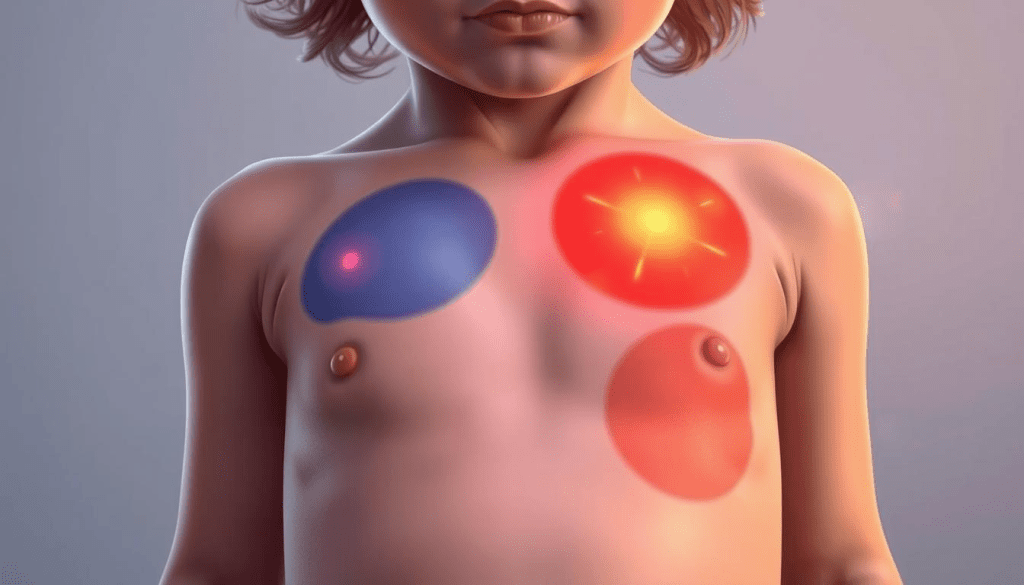
The Rule of 9 helps us make more treatment plans for burns. It tells us how big a burn is, which helps us plan for wound care, pain relief, and preventing infections.
It also helps us know when a kid needs to go to a burn center. This way, kids get the best care for their burns.
Even though the Rule of 9 is helpful, mistakes can happen. If we guess wrong about how big a burn is, we might not give enough fluid. This can lead to bad outcomes.
To avoid these problems, doctors and nurses need to know the Rule of 9’s limits. This way, we can make sure we’re treating kids’ burns right.
The Rule of Nines is a simple tool for managing burns in adults. It’s also key in pediatric burn care. Knowing the rule helps doctors assess and treat burns accurately.
At LivHospital, we focus on top-notch medical care for kids. We use the Rule of Nines to help children with burns. Our goal is to give them the best care and support their families.
Using the burn percentage chart and rule of nines helps doctors make better treatment plans. This leads to better care for kids with burns.
The Rule of 9 for kids is a tool to guess how much of their body is burned. It looks at how kids’ bodies are different from adults. This helps doctors figure out how much fluid a child needs and what care they should get.
Kids and adults are different in size and shape. Kids have bigger heads and smaller legs. So, the Rule of9 for kids is adjusted to fit their bodies better.
For kids, the head and neck are 18% of the body. Each arm is 9%. The front and back of the trunk are 18% each. And each leg is 14%. These numbers help doctors understand how big a burn is.
Getting the burn size right is key for treating kids. It helps doctors know how much fluid a child needs. If they get it wrong, it can affect how well the child recovers.
Doctors use the Rule of9 to quickly figure out how big a burn is. It helps them plan the best treatment. Knowing how to use the Rule of9 is very important for kids’ burn care.
Mistakes with the Rule of 9 can lead to wrong treatment. This can be too little or too much treatment. Doctors need to be careful to avoid these mistakes for the best care.
The Rule of Nines chart helps doctors guess how big a burn is. It’s a quick way to see how severe a burn is. This helps doctors plan the right treatment.
A burn percentage chart is a tool to estimate how much of the body is burned. It works with the Rule of 9 to help doctors understand the burn. This helps them plan the best treatment.
Subscribe to our e-newsletter to stay informed about the latest innovations in the world of health and exclusive offers!